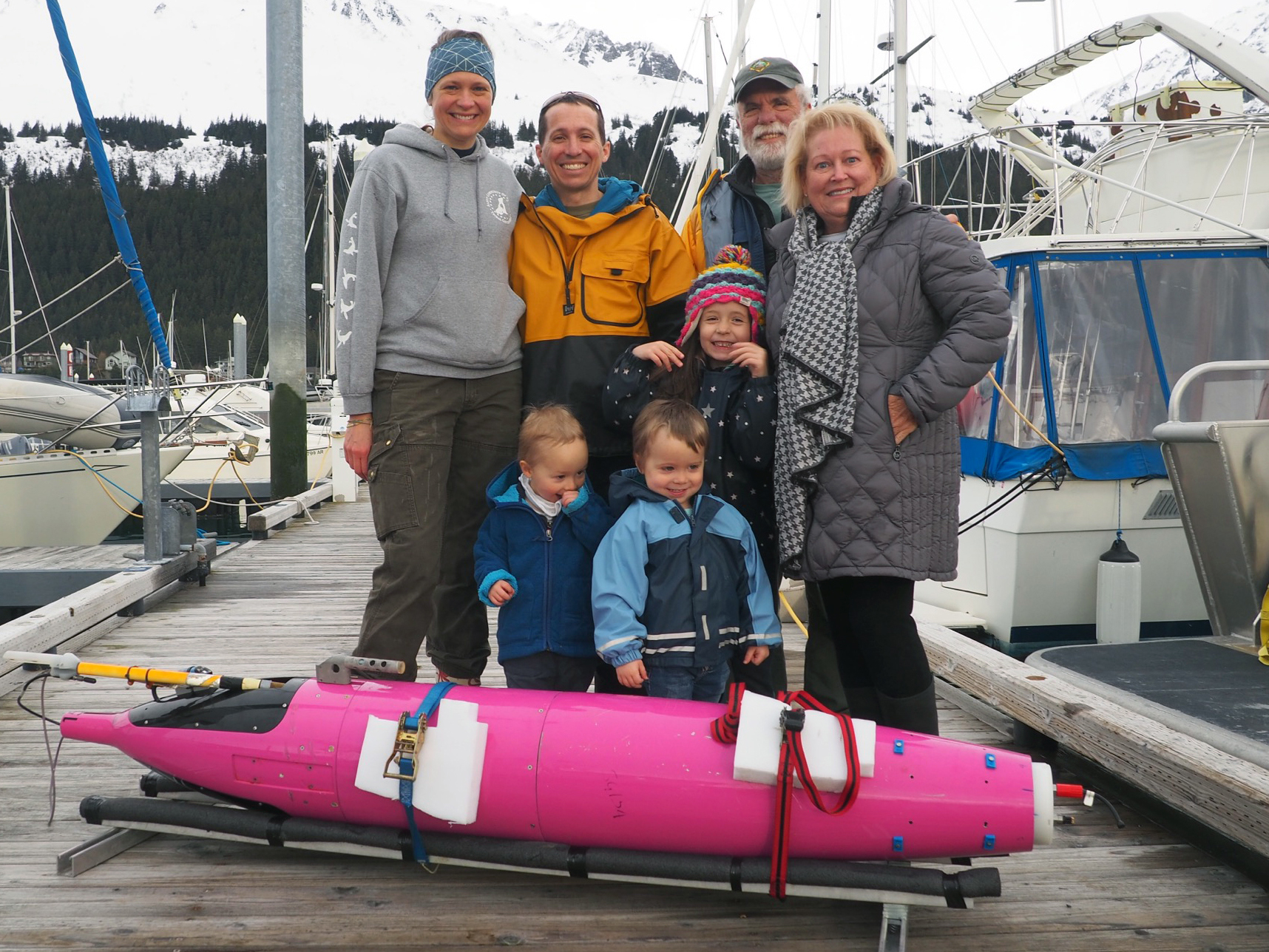Married to science: couple works toward a healthier ocean
Heather McFarland
907-474-6286
May 4, 2022
Science is a family affair for Claudine Hauri and Andrew McDonnell. They’re married oceanographers tackling issues like ocean acidification, lagging technology and Alaska’s massive lack of ocean data.

Married oceanographers Andrew McDonnell and Claudine Hauri while doing fieldwork in the Gulf of Alaska.
Throughout history couples like Marie and Pierre Curie, the physicists credited with discovering radium, have mixed romance and science to make new discoveries and create fruitful collaborations. In these cases, being married to your work means two brains rather than one, and drawing on one another’s strengths in ways that other couples may never understand.
Both Hauri and McDonnell have a passion for science and the ocean. They both work at the University of Alaska Fairbanks — Hauri for the International Arctic Research Center and McDonnell for the College of Fisheries and Ocean Sciences. McDonnell is intrigued by big ideas and scheming up new innovations, while Hauri loves problem solving and getting the job done.
“It’s fun. We have our personal relationship so I talk to her more than any other colleague,” McDonnell said. “I call her up or walk over to her office and we figure things out, or take a step back and think about broader strategies, new opportunities.”
Most recently they dreamed up a new way to track ocean acidification by attaching a carbon dioxide sensor to an unoccupied underwater vehicle. The carbon dioxide seaglider will be used to map how ocean chemistry varies across the Gulf of Alaska and throughout the year. This data is needed to assess how Alaska’s marine resources are being impacted by human-made carbon dioxide and to develop informed responses for the future.

Hauri and McDonnell work together on R/V Nanuq to retrieve a “rosette” with instruments that measure ocean chemistry in the Gulf of Alaska. Their bright pink carbon dioxide seaglider sits behind them.
It’s a challenging feat considering that the carbon dioxide sensor is about 10 times larger, heavier and more power-hungry than the sensors a seaglider usually carries. Mechanical and electrical engineers from around the world are lending their expertise to reengineer both the sensor and seaglider. This spring the team is in Seward, Alaska testing out the new technology.
The seaglider squad includes several young members as well. More specifically, Hauri and McDonnell’s sensitive and affectionate 5-year-old daughter, and twin 3-year-old boys who are intertwined as only twins can be and best located by their chorus of squealing giggles. Having spent their entire lives around science, they’re adventurous and curious about what their parents do, especially when visiting new places.
“They ask every day ‘Where did you work today? Did you work on the boat?’” Hauri said. “And we talk a lot about carbon dioxide. [Our five-year-old] always asks us why there is so much smoke and pollution around, so we talk about how that affects the ocean.”

Hauri and McDonnell greet one of the twins after a day of fieldwork in Seward.
It isn’t always easy being parents who do science fieldwork, especially for Hauri.
Their oldest was six months old when Hauri led Girls in Icy Fjords, bringing young women on a 10-day science, art and wilderness expedition. She recalled spending months pumping enough breast milk to last the trip.
Several years later, she was pregnant with the twins when the $1.25 million seaglider project was funded. Weeks after their birth, the whole family traveled to Seattle for the first seaglider trials.
Despite the challenges, being a mother has given Hauri perspective and made her more efficient. “I love being a mother, and I’ve come to realize that science is not the only thing in my life that matters. Compared to myself before kids, I’ve become more effective when I actually do have time to work.”
Fieldwork with kids is only possible with a team. “You just have to have a supporting network around you and a husband who looks at you as a whole person and just as important as himself,” emphasized Claudine.
That kind of equality bleeds over to how the kids perceive their parents too. “For them there is no difference between mom and dad,” explained Hauri. “I really like that.”

Hauri and McDonnell’s family on the docks of Seward with the pink carbon dioxide seaglider.
Their support network includes grandparents, aunts and uncles. This go-around in Seward it’s Andrew’s parents, Marcia and Paul McDonnell. They’ve traveled around the world lending helping hands during Claudine and Andrew’s research.
“We call it grandma and grandpa’s traveling baby sitting service,” Paul McDonnell said with a chuckle. He describes himself as the assistant to the lead babysitter, Marcia.
They are a science family too, so they get it. “Science just comes natural,” said Marcia.
Author's note: In honor of Mother’s Day, this story is for all the moms in science and the grandmas who make their work possible. A special dedication to my own mom, a scientist who taught me to be inquisitive, hard-working and kind.
NOTE TO EDITORS: Additional photos available, email hrmcfarland@alaska.edu.


